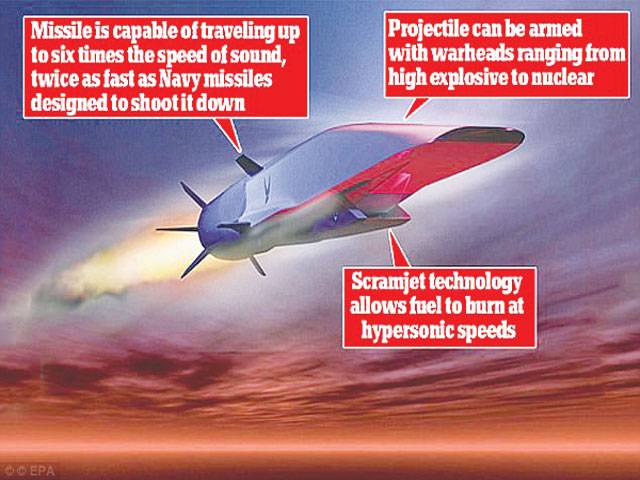
Missile Defense Radar in Hawaii Back on Track
Lynda Williams / Space Alert
(Winter/Spring 2021 Issue) — In the last Space Alert #39, I reported that the proposed Homeland Defense Radar in Hawaii (HDR-H) had been zeroed out in the Pentagon’s 2021 budget proposal, indicating the project was all but cancelled.
According to Vice Adm. Jon Hill, the Missile Defense Agency’s (MDA) director, the agency had decided to push the radar “to the right because of host issues that we have to come through. We still have that issue … We moved it out.” However, due to the lobbying efforts of the Congressional delegation from Hawaii led by Senators Mazie Hirono and Brian Schatz, the HDR-H was put back into the $740 billion National Defensive Authorization Act (NDAA) to the tune of $133 million.
Sparky Rodrigues, a local activist with the group Mālama Mākua that opposes the HDR-H, said he felt blindsided when he learned the radar’s funding had been restored. He accused Hawaii’s congressional delegation of resurrecting a dead project to create job and contract opportunities for local construction companies at the cost of desecrating sacred native lands.
“We participated in the community meetings, submitted testimony and stopped the radar,” he told local Hawaii newspaper, Civil Beat.
e MDA originally had proposed three sites on Oahu for the 8-story-tall-by-8-story-wide $2 billion radar station that would take up approximately 160-acres of land, one on Kuaokala Ridge adjacent to the Air Force’s Kaena Point Satellite Tracking Station, and two additional at the US Army’s Kahuku Training Area on Oahu’s north shore.
After discovering native temples or heiau sacred to native Hawaiians, the MDA eliminated the Kuaokala Ridge site in favor of sites at the Pacific Missile Range Test Facility (PMRF) on the island of Kauai. PMRF is the world’s largest training missile range that houses both THAAD and Aegis Ashore MD interceptor test systems. e Pentagon is also considering plans for deploying Aegis Ashore as an operational interceptor site at PRMF, a very controversial proposal for locals.
If HDR-H is built in Kauai it is very likely that Aegis Ashore will become operational at PRMF, making Hawaii a greater target to US adversaries.
Hirono, a member of the Senate Armed Services Committee, claimed in a press release that “HDRH is part of our country’s critical, layered defense. As the US continues to confront a range of strategic threats in the Indo-Asia-Pacific region, it is imperative that all Americans are protected by our ballistic missile defense system.”
However there is no scientific evidence that our ballistic missile defense system can protect anyone from nuclear weapons. e HDR-H, like its precursor, the long overdue Long Range Defense Radar (LRDR) in Alaska, is a midcourse tracking radar intended to identify nuclear ballistic missiles early in flight from North Korea, to be intercepted by 44 ground-based midcourse interceptors (GMD) based in California and Alaska.
But after nearly 20 years and $100 billion, the ageing GMD system has never been tested in real world scenarios with decoys.
According to Laura Grego, Senior Scientist with the Union of Concerned Scientists, “These radars are meant to try to help you discriminate from the real target and a confusing decoy. We’ve never tested the system in anything like those conditions. I’m pre y skeptical that they would even work well,” she told Hawaii News Now.

MDA cancelled the HDR-H because it is outdated technology that will not be able to handle looming hypersonic missiles being developed by the US, China and Russia in a new hypersonic arms race. The MDA was moving the money from ground-based radar systems like the HDR-H to space-based sensors that may better detect the unpredictable trajectories of hypersonic missiles. Hypersonic missiles travel at speeds greater than five times the speed of sound and are also able to y at lower altitudes than ballistic missiles and can follow unpredictable trajectories.
According to a recent US Government Accountability Office report on hypersonic missiles: “Unlike ballistic missiles, which can reach similar speeds but have a relatively fixed flight path, hypersonic weapons, once developed, would fly at lower altitudes, be highly maneuverable, and may be able to change targets during flight. This will make them extremely difficult to defend against.”
In the meantime, the MDA is developing a “layered” approach to missile defense that relies on extending the range of Aegis SM3-Block 2 interceptor while awaiting a $5 billion upgrade on GMD with Next Generation Interceptors (NGI), that will take 10 years to develop and deploy.
The Aegis SM3Block 2 interceptor was designed for short and intermediate range targets, not intercontinental-range ballistic missiles (ICBM). SM3 interceptors are cheaper than GMDs and can be deployed on Aegis navy destroyers and on land in an Aegis Ashore system. Arms control experts fear that the US deploying large numbers of Aegis interceptors will compromise new Strategic Arms Reduction Treaty (START) negotiations.
Archeological surveys and Environmental Impact Studies currently being developed for all proposed sites should be released in early 2021, more than a year behind schedule. The NDAA also requires the MDA to produce a report within 30 days regarding the Kauai site’s viability and impact on PMRF training range operations, in early February 2021.
In this time of grave economic uncertainty due to the COVID-19 pandemic, the government must redirect spending from the police and military to more urgent social needs such as health care, education, and the environment. We must pursue diplomatic strategies for resolving conflicts in the Pacific.
Lynda Williams is a physicist and science entertainer who is devoted to nuclear disarmament and the proliferation of peace. Lynda lives and teaches in northern California.
Posted in accordance with Title 17, Section 107, US Code, for noncommercial, educational purposes.